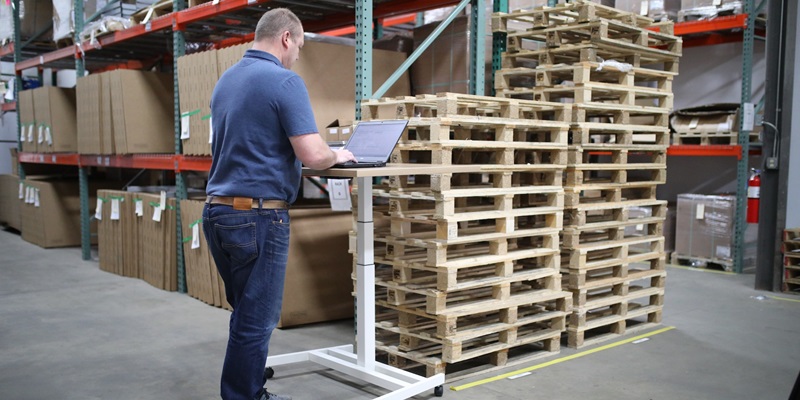In today’s rapidly evolving digital age, the application of robotics and automation technologies has revolutionized the functioning of warehouses and shipping facilities. These advanced technologies have vastly improved operational efficiency, reduced physical strain, enhanced safety measures, and elevated overall productivity. In this article, we will explore the significant advantages that robotics and automation bring to these industries and how they are reshaping the future of warehouse management.
Reduction of Physical Strain and Injury
Moving heavy and odd-sized items is a physically demanding task that often leads to worker fatigue and injuries. The deployment of robotics in automating these tasks offers a remarkable reduction in physical strain for employees. With the assistance of robots, the risk of injuries related to lifting heavy objects is significantly minimized. This not only ensures the well-being of workers but also avoids prolonged absences due to work-related injuries.
Collision Prevention
One of the greatest benefits of automation is the elimination of collisions within warehouse and facility settings. Traditionally, accidents occur both between humans and equipment or vehicles. Robotics technology, equipped with intelligent sensors and precision controls, eliminates these collision risks. By minimizing accidents, automation enhances overall safety and reduces the incidence of damage to goods, equipment, and infrastructure.
Training and Simulation
Automation provides an opportunity to create “sandbox environments” within warehouses. These controlled spaces simulate realistic scenarios, allowing employees to train and gain hands-on experience without the risks associated with a fully functioning facility. By enabling workers to practice their skills in a controlled and risk-free setting, automation significantly enhances training effectiveness, reducing both time and costs while ensuring that employees are better prepared for real-world challenges.
Handling of Hazardous Materials
The transportation of hazardous materials within facilities poses grave risks to workers and the environment. Here, automation plays a crucial role in ensuring the safe movement of such materials. Armored robots, equipped with sensors and advanced security mechanisms, significantly reduce human exposure to harmful substances. This not only mitigates potential health hazards but also minimizes the chances of accidents and environmental damage.
Increased Efficiency and Productivity
Automation and robotics improve warehouse and facility operations by enhancing efficiency and productivity. With the ability to expedite fulfillment processes, automation reduces facility dwell times and transit times for shipped parcels. Improved use of robotics technology also streamlines inventory management, reduces errors, and optimizes order fulfillment, thereby increasing the overall output of warehouses and shipping facilities.
The assistance provided by robotic technology in intensive tasks greatly simplifies operations for human workers. For instance, heavy or awkward lifts that traditionally require more than one person to handle can now be efficiently managed with machine assistance. This not only saves time and resources but also improves worker well-being and prevents physical strain-related injuries.
Predictive Maintenance
An additional benefit of automated, AI-powered systems is their ability to enable predictive maintenance. By proactively identifying maintenance requirements and sending reminders, as well as reacting to potential machinery issues before or at the time of breakdown, automation reduces downtime and prevents costly repairs. This not only ensures the seamless functioning of equipment but also extends its lifespan, resulting in long-term cost savings.
Improving Employee Experience
Automation and robotics have tremendous potential to enhance the employee experience (EX) for warehouse and facility workers. Streamlined operations, reduced physical strain, and improved safety measures contribute to higher job satisfaction among employees. By alleviating the burden of physically demanding tasks and providing a safer working environment, automation significantly boosts morale and overall well-being.
Staying Competitive and Adapting
In today’s competitive business landscape, the implementation of automation and robotics is crucial for companies to stay relevant and adaptable. Embracing these technologies ensures that warehouses and shipping facilities are equipped to handle increasing volumes and changing customer demands. By embracing automation, companies demonstrate forward-thinking and innovation, positioning themselves for long-term success in an ever-evolving industry.
The application of robotics and automation in warehouses and shipping facilities has disrupted traditional practices, transforming the way these industries operate. By reducing physical strain, eliminating collisions, enhancing training methodologies, ensuring the safe handling of hazardous materials, improving efficiency and productivity, and enhancing the overall employee experience, automation has become a game-changer. Its integration enables companies and their workforce to adapt to changing industry dynamics and stay competitive in a rapidly evolving marketplace. As we move forward, embracing automation and robotic technologies becomes imperative for companies seeking sustained growth and success in the warehousing and shipping sectors.

